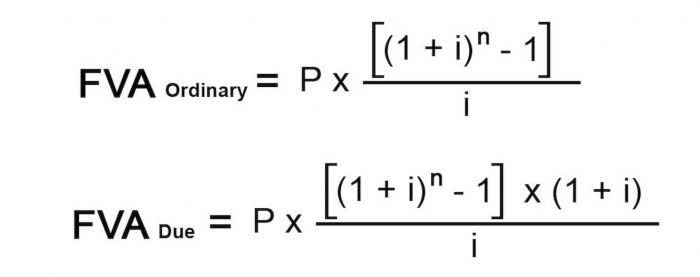
Depending on the kinds of business transactions that have occurred, accounts in the ledgers could have been debited or credited during a given accounting period before they are used in a trial balance worksheet. Furthermore, some accounts may have been used to record multiple business transactions. This step saves a lot time for accountants during the financial statement preparation process because they don’t have to worry about the balance sheet and income statement being off due to an out-of-balance error.
And while a trial balance is prepared purely for your internal controls, a balance sheet is required to manage your company’s finances. Let’s now take a look at the T-accounts and unadjusted trial balance for Printing Plus to see how the information is transferred from the T-accounts to the unadjusted trial balance. All accounts having an ending balance are listed in the trial balance; usually, the accounting software automatically blocks all accounts having a zero balance from appearing in the report. The typical type of balance for an asset on the balance sheet is a debit balance, whereas the typical balance for a liability account is a credit balance. For example, Cash and Accounts Receivable, Net of the Allowance for Doubtful Accounts, typically have a debit balance, and the Accounts Payable account typically has a credit balance. A trial balance is so called because it provides a test of a fundamental aspect of a set of books, but is not a full audit of them.
What does a trial balance include?
It has our assets, expenses and drawings on the left (the debit side) and our liabilities, revenue and owner’s equity on the right (the credit side). If you’ve followed the above method, you can simply and quickly calculate all of the credit balances in your credit entry column. If you’re preparing your trial balance with a spreadsheet software program like Microsoft Excel, you can insert a formula that will perform the calculation for you. Even trial balance example when the debit and credit totals stated on the trial balance equal each other, it does not mean that there are no errors in the accounts listed in the trial balance. We note below several ways in which errors could occur and yet not be spotted by reviewing the trial balance. Companies can use a trial balance to keep track of their financial position, and so they may prepare several different types of trial balance throughout the financial year.
Angela Boxwell, MAAT, brings over 30 years of experience in accounting and finance. As the founder of Business Accounting Basics, she offers a wealth of free advice and practical tips to small business owners and entrepreneurs dealing with business finance complexities. Here are some accounting packages we recommend looking at and taking out a trial to see if they suit your business. Each trial balance will follow the same format as above, but they are used in slightly different circumstances.
Trial Balance
You can efile income tax return on your income from salary, house property, capital gains, business & profession and income from other sources. Further you can also file TDS returns, generate Form-16, use our Tax Calculator software, claim HRA, check refund status and generate rent receipts for Income Tax Filing. The adjusting entries in the example are for the accrual of $25,000 in salaries that were unpaid as of the end of July, as well as for $50,000 of earned but unbilled sales. Once the adjustments are complete, the trial balance will be reviewed again.

After preparing your trial balance this month, you discover that it does not balance. Note that for this step, we are considering our trial balance to be unadjusted. The unadjusted trial balance in this section includes accounts before they have been adjusted.
Tips for ensuring greater accuracy
Create a trial balance at least once per quarter or reporting period. If you’re having consistent issues, consider preparing more frequent trial balances until you find the source of these anomalies. When you prepare your trial balance, include as much detail as possible, such as the date of the accounting period. This information will help you stay organized if you need to refer to your previous trial balances. According to a study from Indiana University, roughly 60% of accounting errors come from basic bookkeeping mistakes.

Money Instructor® provides comprehensive resources that empower young people and adults with practical knowledge and skills in money management, investing, business, and the economy. Our resources include engaging lesson plans, interactive lessons, worksheets, informative articles, and more. What do you do if you have tried both methods and neither has worked?
The adjusting entries are shown in a separate column, but in aggregate for each account; thus, it may be difficult to discern which specific journal entries impact each account. This report plays a pivotal role in the accounting cycle, marking its final step before preparing financial statements. It acts as a tool for accountants and business owners to verify the accuracy of bookkeeping entries and to identify any potential errors that may have occurred during the accounting period. A trial balance includes all your business accounts that have credits or debits during a given reporting period. It includes the amounts credited or debited to each account, the dates of the reporting period, the account numbers, and the totals for all credits and debits entered during that time.
- The trial balance includes balance sheet and income statement accounts.
- These components collectively provide a comprehensive overview of the account balances and their classification (debit or credit) at a specific time.
- Get enough training to handle relevant GAAP accounting principles correctly.
- Trial Balance only confirms that the total of all debit balances match the total of all credit balances.
- An unadjusted trial balance is done before adjusting journal entries are completed.
- A bank overdraft in your trial balance is treated as a credit amount.
After the unadjusted trial balance is prepared and it appears error-free, a company might look at its financial statements to get an idea of the company’s position before adjustments are made to certain accounts. A more complete picture of company position develops after adjustments occur, and an adjusted trial balance has been prepared. These next steps in the accounting cycle are covered in The Adjustment Process.
